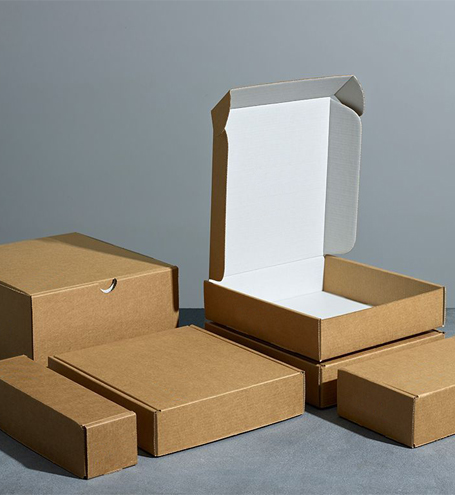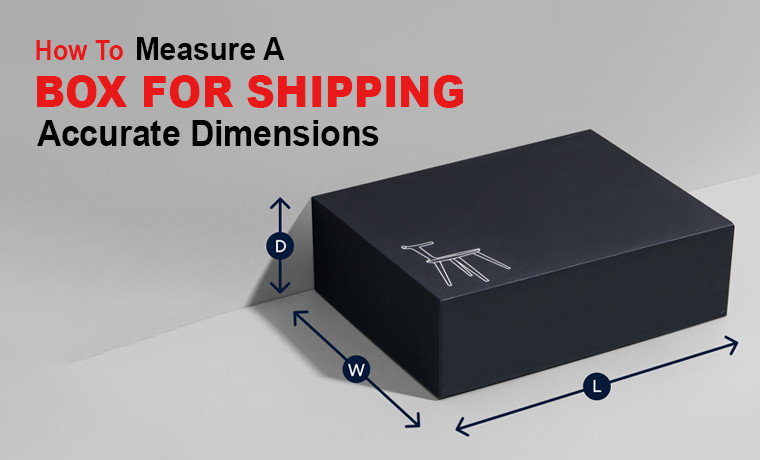The Ultimate Guide to Paper Bags (Types, Uses & Benefits)
September 05, 2025

Got a shopping list but have no idea how you’ll carry everything? Need to carry more than your hands can handle? No worries—paper bags have got your back to save your day. Think about it: they are sturdy, lightweight, surprisingly strong, and easy to carry.
Whether you’re picking up groceries, grabbing things from the market, or packing gifts, paper bags in different shapes and sizes are your go-to sidekick for shopping, storage, and more—a simple solution to your everyday hauling needs.
And since they are made from biodegradable and recyclable materials, they are an eco-friendly choice for conscious consumers. Stick around. This guide will walk you through everything you want to know—how paper bags are made, their types, best use cases, and benefits. You will learn how they have become an essential part of everyday life. Let’s get started.
A History of Paper Bags From Invention to Modern Use
Where do paper bags come from? Let’s review who invented bags or paper bags.
When Were Paper Bags Invented?
Looking into the history of paper bags takes us back to 1852 when an American inventor, Francis Wolle, patented the first machine to mass-produce paper bags. This was the time when paper was first made.
Paper Bags Reshaped
This invention improved the practicality and durability of paper bags. Before this invention, paper bags were made by hand using simple fold and glue techniques.
Bagging Evolution in the 19s
Wolle’s automated machine made it simpler to make paper bags. It earned popularity over time and began to be used widely in shopping and packaging. In 1857, Margaret Knight developed a machine to produce flat-bottom paper bags, which still exist and we use.
The Eco-Friendly Shift in the 20s
In 1912, Hans Schwan patented the square-bottom paper bag to enhance its functionality. This innovation was the beginning of paper bags as a more eco-friendly substitute for plastic bags. Over time, paper bags evolved into different designs and styles, catering to various needs.
Paper Bags Market Size Now
The global paper bags market as of today is $6.79 billion and is projected to reach $10.44 billion by 2035.
What Are Paper Bags Made Of?
Paper bags are made from renewable, biodegradable materials like kraft paper. Choosing more sustainable options reduces your environmental footprint.
Raw Material Selection to Manufacture Paper Bags
The most common material used to manufacture paper bags is Kraft, made from wood chips, which break down into pulp when exposed to extreme heat. The wood pulp is washed and bleached, which produces the final form of Kraft.
The Pulping and Manufacturing Process
The production process of paper bags begins with wood pulp derived from trees. Primarily, it is a softwood species such as pine or spruce. The trees are debarked and cut into small chunks. Then they are boiled in a blend of chemical solutions, which transform them into pulpy substances.
Drying Pressing
This pulp undergoes a bleaching process, is drained, and then pressed into thin sheets.
Cutting and Shaping
These sheets are cut, printed, and folded into the diverse range of paper bags we use.
What Determines a Paper Bag's Strength?
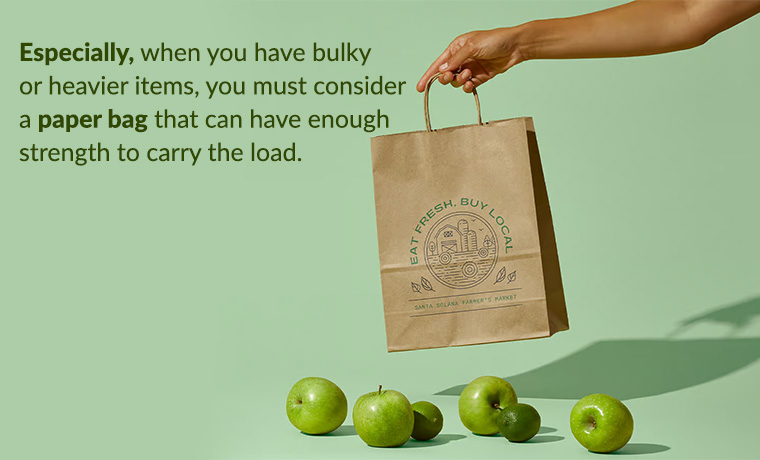
Other than the material, there are several things, including thickness, density, and weight, that are involved in the properties of a paper to help you determine what type of paper bag you should go with. Especially when you have bulky or heavier items, you must consider a paper bag that can have enough strength to carry the load.
Paper Basis Weight
It refers to the weight of the paper used to manufacture paper bags, which defines how much strength and density in pounds a paper contains. Usually, it is 25 x 38 inches, indicating the thickness and durability of the paper. The higher the paper basis weight, the stronger the paper.
Gusset
It is a strengthened area where the material is added to accommodate heavy-duty items, which is less likely to tear or break.
Twist
Kraft paper bags are made with twisting handles into the cords. The cords are glued inside paper bags. It enhances the power of handling the weight of the bag, which results in comfortable handling and carrying of the bag.
Square-Bottom
To accommodate and carry your larger or heavier items, this Knight’s square bottom paper bag style is the best fit.
Envelop Style
Wolle’s style, serving many businesses, is also being used in our postal system to accommodate larger items.
Most Common Paper Bag Sizes and Dimensions
Paper bags come in different sizes, from small to large, for grocery or bulky items. Their dimensions, measured as length x width x height, are shown in the table below to help you choose the most suitable bag according to your needs.
| Bag Type | Dimensions | Best for |
| Small | 5" x 3" x 8" 6" x 4" x 9" 8" x 4" x 10" |
Small candles, jewelry, small gifts, single cosmetics, small toys |
| Medium | 10" x 5" x 12" 12" x 6" x 14" 13" x 7" x 17" |
Clothing boutiques, light electronics, books, large gift sets |
| Large | 14" x 8" x 18" 18″ x 7″ x 22″ 18" x 8" x 22" |
Shoes, bulkier items, oversized clothing items, grocery |
7 Different Types Of Paper Bags and Their Best Uses
Paper bags come in various types. Each type of paper bag is designed to serve the specific needs of consumers. The brown paper bag made from Kraft is very common. It is a popular choice due to its strength and durability, and is used to carry fruits and vegetables.
Other types of colored paper bags are used in retail, food, and beverage industries. They are here as:
1. Mailing Paper Bags
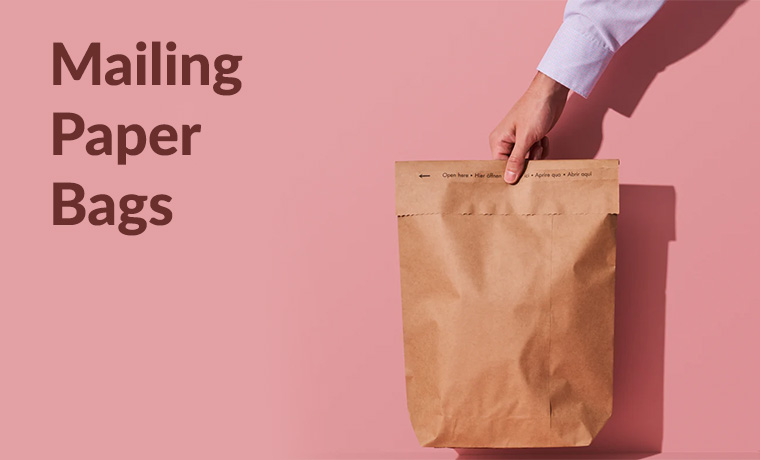
Available in various sizes with sealing strips for effortless closure, these lightweight and durable mailing bags are perfect. They are used to send items through the mail and protect your items during transit.
2. Pinch Bottom Bags

These uniquely designed bags are a flexible packaging option with a flat bottom that is pinched and allows the bag to stand upright. You can store grains, powder, and loose products in it.
3. Party Bags

These party paper bags, also known as decorative bags, come in various sizes, featuring handles, and are used to pack party favors. For special events, these types of paper bags are ideal for carrying gifts and presenting them to your guests.
4. Shopping Paper Bags With Handles
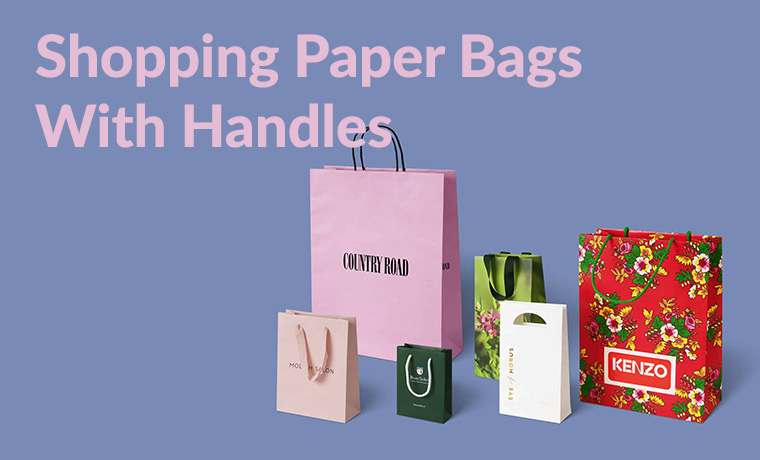
Shopping paper bags with handles are designed to carry and handle purchases. The handles on the top of the bag ensure comfortable handling and carrying, which makes them ideal for retail use.
5. Flat Bags

These flat paper bags are simple, one-layered flat bottom bags with a flat, non-gusseted bottom. They are formed in a rectangular shape to store flat documents and can be easily folded and stored when not in use.
6. Paper Bags With Plastic Windows

Featuring a clear plastic panel on one side, these paper bags allow the content to be easily visible to customers without opening the bag. For baked goods and retail products, these bags are an excellent choice.
7. D-cut Paper Bags

D-cut paper bags are bags with handles cut into a D shape on the top for comfortable carrying. Showing simplicity and following an eco-friendly nature, these bags are often used for shopping and promotional purposes.
From packing your food or bakery items to mailing and shopping bags with handles, you can look at each bag type one by one and choose what suits you most. They will help you enhance your portability experience.
Each paper bag type mentioned above serves an exceptional purpose, offering versatility and durability. You can consider any type by clarifying its benefits and determining your needs.
Read More: The Ultimate Guide To Eco-Friendly Reusable Shopping Bags
Key Benefits Of Using Paper Bags
Apart from environmental benefits, paper bags also offer practical benefits that you can’t imagine.
From The Customer’s Point Of View
They are robust and reliable packaging solutions for carrying various items. Not only this. They are tear-resistant and have the potential to bear the pressure of weight compared to plastic bags. Their flat base stands upright, which is good for storing and transporting items.
From The Retailers’ Perspective
These paper bags are a powerful marketing tool to advertise the brand printed on the bag. You can customize these paper bags with logos following the best possible customization options and branding elements to enhance your brand identity. It can help to build a strong relationship between a brand and its customers.
Ecological Impact of Using Paper Bags
Paper bags made from biodegradable materials are environmentally friendly. It makes them a more eco-friendly option than plastic bags. These reusable paper bags made from wood fiber can be recycled. This is why they are less harmful to the environment and reduce land waste.
However, paper bags made with a blend of chemical substances are not eco-friendly.
Eco Wins Every Time
Eco-friendly or non-eco-friendly? Choose wisely. Pick a biodegradable and sustainable material for your paper bags. Instead of bleached, pick unbleached material. It will reduce landfills and help you contribute to saving the planet.
Paper Bags: A Cost-Efficient Choice

Paper bags are an economical packaging option because there is no perplexity involved. Further, they are sustainable and easy to recycle.
Plastic bags have complex production processes involving raw materials, which raises the cost and makes it an expensive packaging option.
Therefore, many businesses are switching over to paper bags to cut down their packaging costs and enhance customer experience.
Final Thoughts
Paper bags are benefiting consumers and brands in many ways. They not only allow you to carry your items but also bring convenience in handling, resulting in ultimate satisfaction and peace of mind that all your products are together in a durable bag. Due to durability, these cost-efficient shopping paper bags have built a strong relationship with consumers and brands. Their sustainability leaves less environmental impact, which has made them more popular than plastic bags.
If you need custom paper bags made from the highest-quality materials in your desired size and style, you will find no better manufacturer than Custom Product Packaging. Our customer support is available 24/7 to assist you in every aspect, including personalization, custom printing, and many other things. Please email us at orders@customproductpackaging.com to share your requirements and start your journey with us.
